The Rauch Axent 100.1 has been introduced into the Irish market by importers Cork Farm Machinery.
Rauch claims the new Axent is the first modular high-capacity spreader on the market capable of the precision spreading of lime and fertiliser.
It spreads granulated fertiliser at a working width of up to 50m as well as lime up to 15m with high precision. The quick-change system sees two designated spreading modules that can be safely and quickly assembled on the Axent in as little as five minutes.
The Axent 100.1 features Electronic Mass Flow Control (EMC), a technology that measures and continuously adjusts the application rate on each disc independently.
This increases distribution precision on both sides.
A number of sensors read torque levels at each disc. Flow rate is then adjusted automatically once deviating from the set application rate. The electrically controlled metering outlets are then corrected according to the new deviation data. This all happens automatically, leaving the operator just to insert the desired application rate (kg/ha) at the start.
Along with its 9,500 litre capacity, the new Axent features full Isobus and GPS technology, full and limited border spreading on both sides as well as continuous section control.
Kelly’s of Borris recently began importing and distributing DCM fertiliser spreaders.
The smaller range of pendular/wager type spreaders will come in 800 litre to 1,200 litre capacities, with spreading widths of up to 15m. These machines will have hydraulic opening as standard.
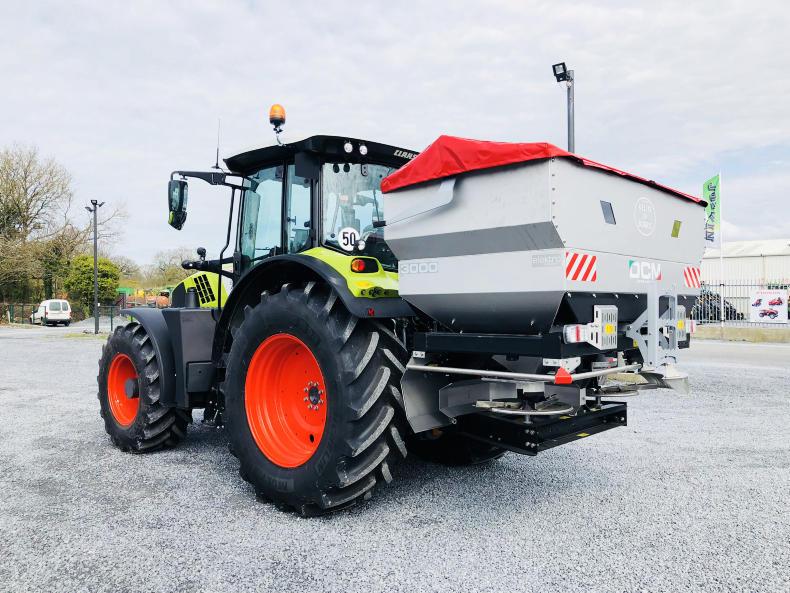
Kelly’s of Borris have recently began importing and distributing DCM fertiliser spreaders.
The CA are the mid-range machines. This range comes with 900 litre to 2,000 litres capacity, with spreading widths from 10m to 24m.These are available as standard or electro machines. The electro machines have a cab control box and weigh cell system, meaning they adjust the rate depending on forward speed.
The MX series is the larger range. These come with capacities from 1,200 litres to 4,200 litres with working widths from 18m to 36m simply by adjusting the length of the spreader veins. They are also available as standard or electro machines with a weigh cell system.
These Italian-built spreaders made their Irish debut at the FTMTA Farm Machinery Show. DCM also manufactures its own crane and bogey as optional extras. The firm has been manufacturing fertiliser spreaders since 1980.
DCM will be soon launching a new S and M series which will be available with full Isobus and sectional control.
Amazone Argus
Twin system
Amazone has recently released a system to try to reduce the effects of bad setup and increase spreader accuracy.
As users are well aware, many factors can affect spread pattern, including worn spreader vanes, hilly ground or changing tractor speed.
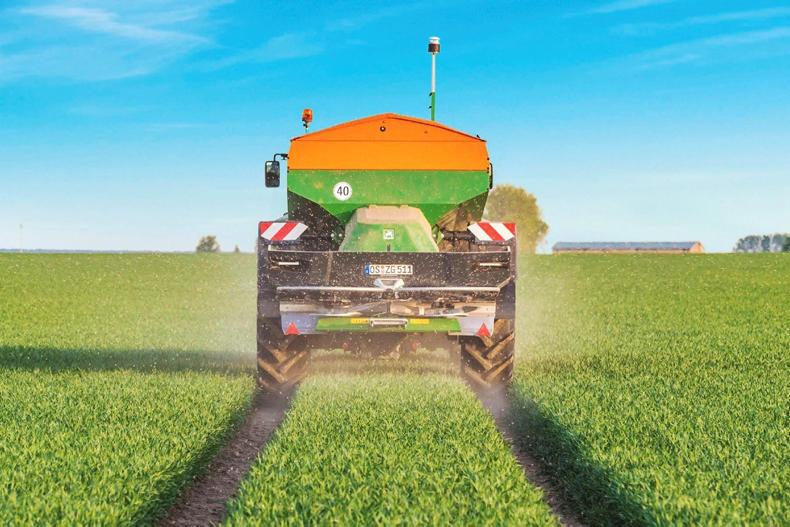
Amazone Argus Twin is available on Z-ATS mounted and Z-GTS trailed spreaders.
The Amazone Argus Twin system has seven radar sensors mounted on each side of the spreader. These monitor the angle of the fertiliser off the spreading disc and feedback to the control box.
The system automatically makes adjustments. The advantage of this system is that it has constant online monitoring and corrects your spreader settings while on the move.
The Sulky DX fertiliser spreader range is now available in an Isobus version. Up to now, Sulky has had Isobus available on its X40+ and X50+ spreaders. The company is extending this offer to the DX30/DX30+ range of spreaders.
All Sulky DX30 and DX30+ fertiliser spreaders with weighing and electrical control of the opening and closing of shutters may be connected to an Isobus Universal Terminal present on the farm.
Users can now take advantage of the Isobus functions such as application rate adjustment or sectional control.
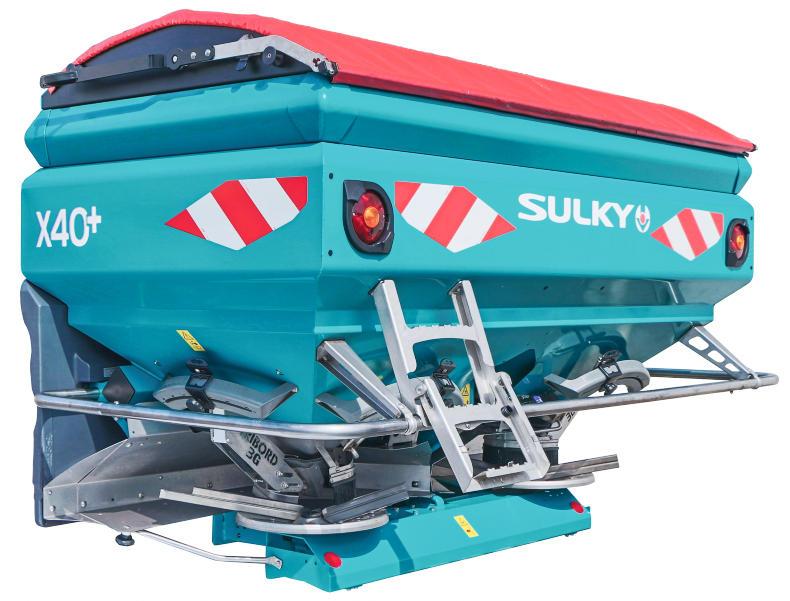
The Sulky DX fertiliser spreader range is now available in an ISOBUS version.
This sectional control makes it possible to activate the Stop&Go function. This drives the automatic opening and closing of shutters in the headlands depending on the GPS position of the machine.
By adding an Isolink converter unit, it is now possible to develop the spreader into the Isobus version.
The Rauch Axent 100.1 has been introduced into the Irish market by importers Cork Farm Machinery.
Rauch claims the new Axent is the first modular high-capacity spreader on the market capable of the precision spreading of lime and fertiliser.
It spreads granulated fertiliser at a working width of up to 50m as well as lime up to 15m with high precision. The quick-change system sees two designated spreading modules that can be safely and quickly assembled on the Axent in as little as five minutes.
The Axent 100.1 features Electronic Mass Flow Control (EMC), a technology that measures and continuously adjusts the application rate on each disc independently.
This increases distribution precision on both sides.
A number of sensors read torque levels at each disc. Flow rate is then adjusted automatically once deviating from the set application rate. The electrically controlled metering outlets are then corrected according to the new deviation data. This all happens automatically, leaving the operator just to insert the desired application rate (kg/ha) at the start.
Along with its 9,500 litre capacity, the new Axent features full Isobus and GPS technology, full and limited border spreading on both sides as well as continuous section control.
Kelly’s of Borris recently began importing and distributing DCM fertiliser spreaders.
The smaller range of pendular/wager type spreaders will come in 800 litre to 1,200 litre capacities, with spreading widths of up to 15m. These machines will have hydraulic opening as standard.

Kelly’s of Borris have recently began importing and distributing DCM fertiliser spreaders.
The CA are the mid-range machines. This range comes with 900 litre to 2,000 litres capacity, with spreading widths from 10m to 24m.These are available as standard or electro machines. The electro machines have a cab control box and weigh cell system, meaning they adjust the rate depending on forward speed.
The MX series is the larger range. These come with capacities from 1,200 litres to 4,200 litres with working widths from 18m to 36m simply by adjusting the length of the spreader veins. They are also available as standard or electro machines with a weigh cell system.
These Italian-built spreaders made their Irish debut at the FTMTA Farm Machinery Show. DCM also manufactures its own crane and bogey as optional extras. The firm has been manufacturing fertiliser spreaders since 1980.
DCM will be soon launching a new S and M series which will be available with full Isobus and sectional control.
Amazone Argus
Twin system
Amazone has recently released a system to try to reduce the effects of bad setup and increase spreader accuracy.
As users are well aware, many factors can affect spread pattern, including worn spreader vanes, hilly ground or changing tractor speed.

Amazone Argus Twin is available on Z-ATS mounted and Z-GTS trailed spreaders.
The Amazone Argus Twin system has seven radar sensors mounted on each side of the spreader. These monitor the angle of the fertiliser off the spreading disc and feedback to the control box.
The system automatically makes adjustments. The advantage of this system is that it has constant online monitoring and corrects your spreader settings while on the move.
The Sulky DX fertiliser spreader range is now available in an Isobus version. Up to now, Sulky has had Isobus available on its X40+ and X50+ spreaders. The company is extending this offer to the DX30/DX30+ range of spreaders.
All Sulky DX30 and DX30+ fertiliser spreaders with weighing and electrical control of the opening and closing of shutters may be connected to an Isobus Universal Terminal present on the farm.
Users can now take advantage of the Isobus functions such as application rate adjustment or sectional control.

The Sulky DX fertiliser spreader range is now available in an ISOBUS version.
This sectional control makes it possible to activate the Stop&Go function. This drives the automatic opening and closing of shutters in the headlands depending on the GPS position of the machine.
By adding an Isolink converter unit, it is now possible to develop the spreader into the Isobus version.







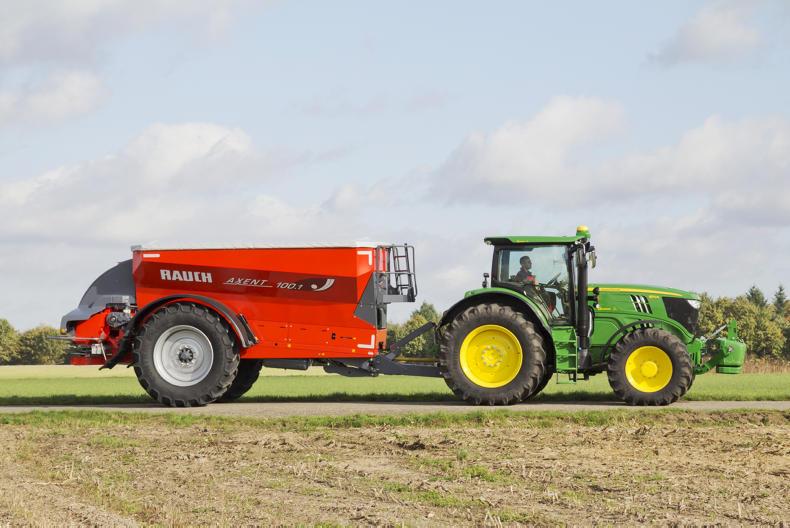
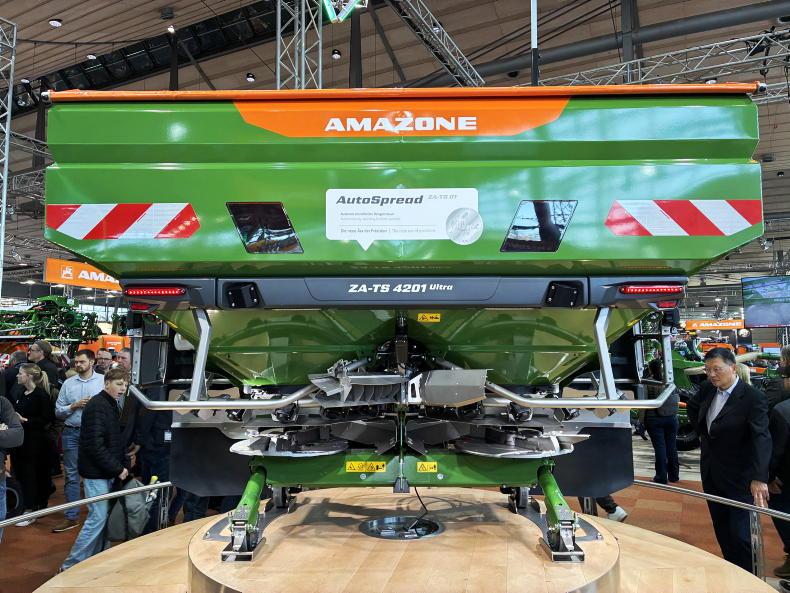

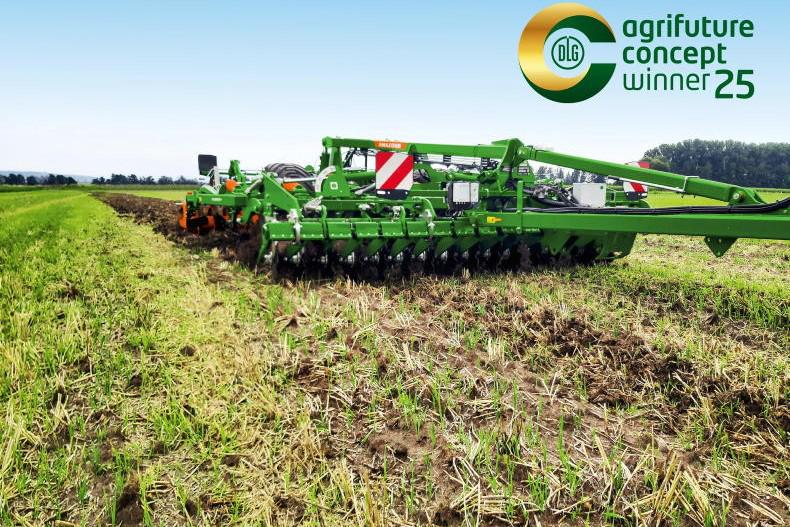
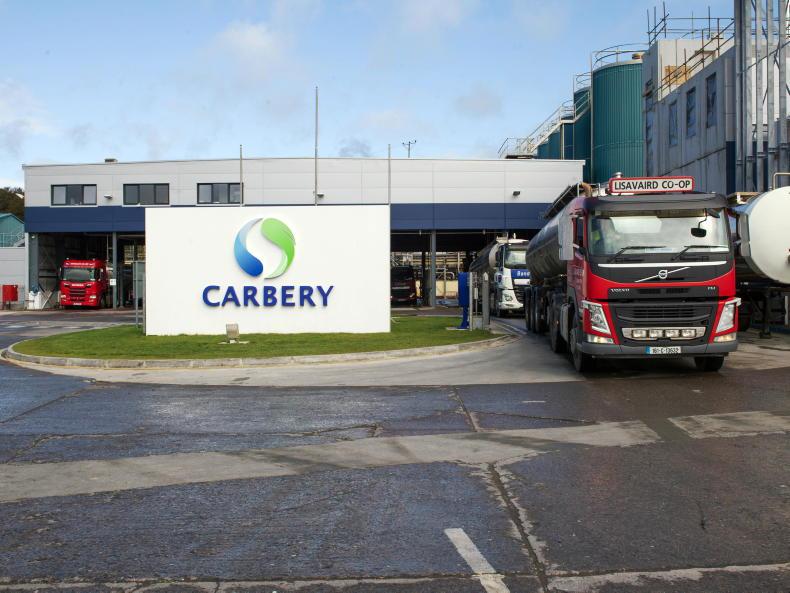

SHARING OPTIONS